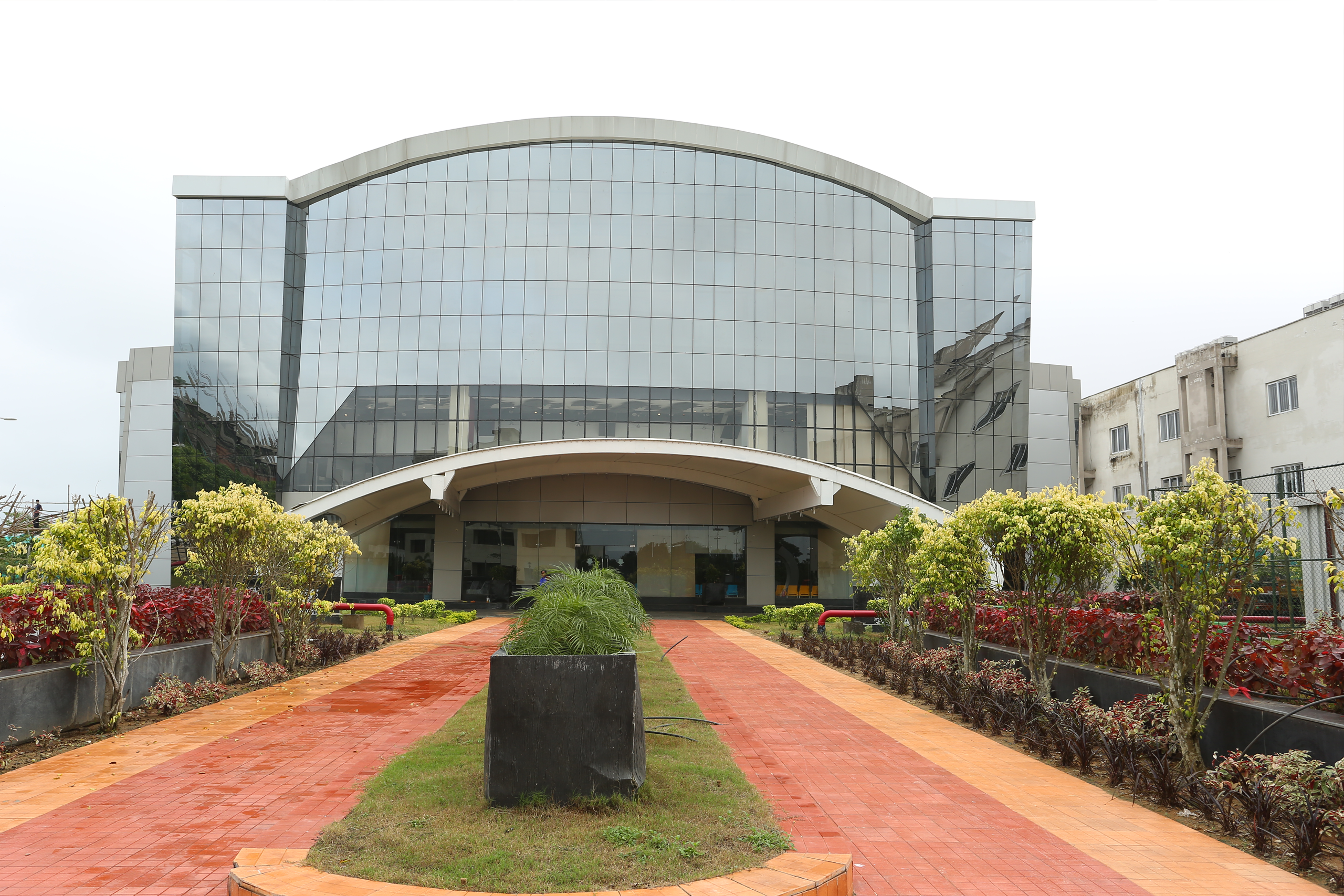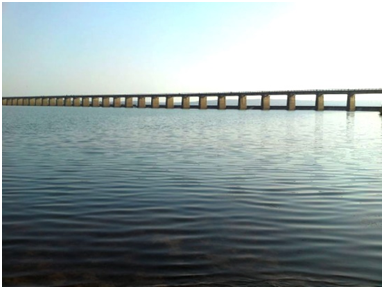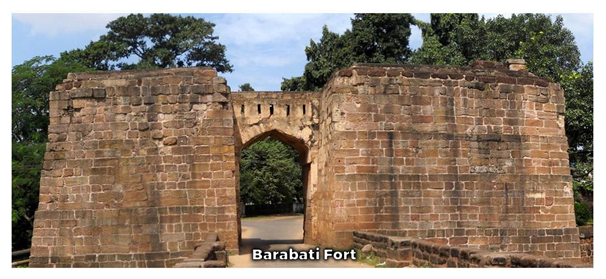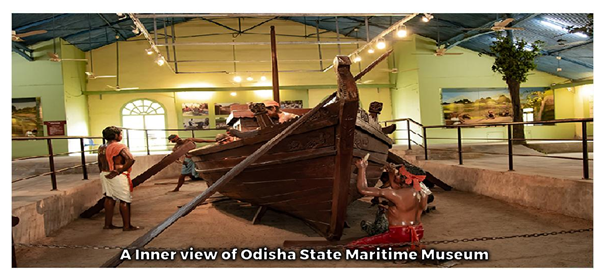-
Home
Key Links
- About us
- Academic Programme
- Admissions
- Research
- People
-
Students
- Explore Students
- Student Council
- Student Committee And Societies
- Legal Services Committee
- Unnat Bharat Abhiyan
- The Moot Society
- Mentorship
- Placement
- Internship Committee
- Achievements
- Scholarship Schemes
- Examinations
- Anti-Ragging Policy
- Student Support Platform
- Students Grievances Redressal Committee(S) (SGRC)
- Internal Complaints Committee(ICC)
- Alumni
- Student Testimonial
-
Facilities
- Explore Facilities
- Library
- Hostel
- Sports
- Health Centre
- Cultural
-
NAAC
- Explore NAAC
- SSR
- AQAR
- IQAC
- Photographs
Places to see
The word Cuttack literally means military cantonment in Sanskrit. The ruins of Barabati Fort reminds us of its past as a military base and seat of administration for the Kings of Kalinga. The city played a significant role in shaping the history of present day Odisha.
How to reach:
By Air
Nearest Airport is Bhubaneswar Airport- 54 Km
By Road
Cuttack City is connected with all major cities of India by the National Highway No 16.
By Train
Nearest Railway Station is Cuttack Junction.
Best Time: October to March
Places to See in Cuttack
Naraj
Situated on the origin of river Kathajodi a tributary of Mahanadi gives a panoramic view of the vast expanse of the river Mahanadi. There are many Buddhist images found. The place is frequented by devotees offering prayers at Lord Sidheswar. This is also a beautiful picnic spot.
Cuttack Chandi Temple
The Kataka Chandi Temple is an ancient temple dedicated to the Goddess Chandi, the presiding deity of Cuttack, Odisha, India. The temple is located near the banks of the Mahanadi River. It is famous for the annual Durga Puja and Kali Puja festivals. The Durga Puja festivities are prominent in Maa Katak Chandi temple which takes place for 16 days starting from dark fortnight of Ashwina Krishna Ashtami till Ashwina shukla navami and Vijayadashami. The goddess, popularly called Maa Kataka Chandi, sits and rules on the heart of the ancient city. She has four hands holding Paasha (noose), Ankusha (goad), gestures dispelling fear (Abhaya), and granting boon (Varada). She is worshipped as Bhuvaneshvari Mahavidya (the queen of universe) by Sevayatas belonging to Utkala Brahmins every day. Maa Chandi is worshipped in various incarnations of Durga during the puja. In Cuttack, people strongly believe Maa Katak Chandi as ‘The Living Goddess’.
Dhabaleswar
A picturesque island in Mahandi, the place named after its presiding deity Lord Shree Dhabaleswar (Shiva). The enchanting water spread of Mahandi here provided ample opportunities for boating. There is a hanging bridge connecting the island from its northern side to Mancheswar.
Netaji Museum
Located at Oriya Bazar, the place is an important landmark in the history of India’s freedom struggle, it’s here in this very house on 23rd January 1897 did the famed freedom fighter and founder of the Indian Armed Forces NetajiSubhas Chandra Bose was born to eminent lawyer Janakinath Bose and Prabhavati Devi. He was the ninth child amongst fourteen siblings.
The Barabati Fort
The Barabati was built in 987 CE by the Somavamshi dynasty lineage ruler Maharaja Markata Keshari while building a stone embankment to protect Cuttack which was known as Kataka at that time.
King Anangabhima Deva III of the Eastern Ganga dynasty lived in his capital, Chaudwar (1211-1238 A.D.) One day the king crossed the Mahanadi and came towards the southern side. Here he noticed in the Barabati village belonging to the Ko-danda sub-division that near the god Visweswar, a heron had jumped upon a hawk. Seeing this the king was very much surprised and on an auspicious day laid the foundation of construction of the fort and this village was named Barabati Cuttack. And after that he left Choudwar and lived at Cuttack making it his capital.
In 1568 AD, the city passed to the hands of Karranis of Bengal, then to the Mughal Empire in 1576[2] and then to the Maratha Empire in 1741.[3] Cuttack, with the rest of Odisha, came under British rule in 1803. The Bengal-Nagpur Railways connected Cuttack with Madras (Chennai) and Calcutta (Kolkata) in 1919. It became the capital of the newly formed state of Odisha in 1936 and continued to be so till 1948 when the capital was shifted to Bhubaneswar. The city completed one thousand years of its existence in 1989.
During the rule of the Muslims and the Marathas it continued to be the capital of Odisha. The British army took possession of Barabati fort in October 1803, and it became a prison for confinement of several illustrious rulers of the land. In 1800 the Raja of Kujanga, in 1818 the Raja of Surgaja with his family members were kept under strict confinement to this fort. In addition vandalism to destroy the fort was intensified in the early phase of British rule.
Odisha State Maritime Museum
The Orissa State Maritime Museum, which has been set up at this Jobra Workshop, has 10 nos of galleries along with its ancillary components, as required in a modern museum. This location, which has a beginning around 1869 has the unique distinction of being the only workshop, which catered to the requirement of three provinces of Bihar, Bengal and Odisha under the Bengal Presidency of British India. It was set up by the then PWD department of British administration through the efforts of one Scottish Engineer Mr.G.H.Faulkner immediately after the great famine of 1866 in Odisha, known as “Naa Anka Durviksha”.
The British administration took up the work of excavating the Coast Canal, Taladanda Canal and other irrigation projects to counter the effects of drought. This workshop was mainly catering to the need of anicuts, dams, canals and most important inland water transport system. At that time the access to Calcutta from Cuttack was only through a journey on river Mahanadi to the False Point near Paradeep and on sea up to Calcutta or from Chandabali to Calcutta.
Ansupa Lake
Nearer to Athagarh, Ansupa is a small, but a picturesque lake that offers asylum to migratory birds in winter. The water spread is ideal for fishing and boating.
Ansupa Lake is a 231-hectare (570-acre) horseshoe-shaped fresh water oxbow lake on the left bank of the Mahanadi river, opposite Banki in Cuttack district, Odisha, India. It is 40 km (25 mi) from the city of Cuttack. It is a fresh water lake situated amidst the Saranda Hills and enclosed by bamboo tree greenery and mango trees and acts as a shelter for the migratory birds in the wintry weather season. There are boating and fishing facilities.The lake has been designated as a protected Ramsar site since 2021.
Success !

Thank you for sharing your feedback.
Our team will get back to you at the earliest












